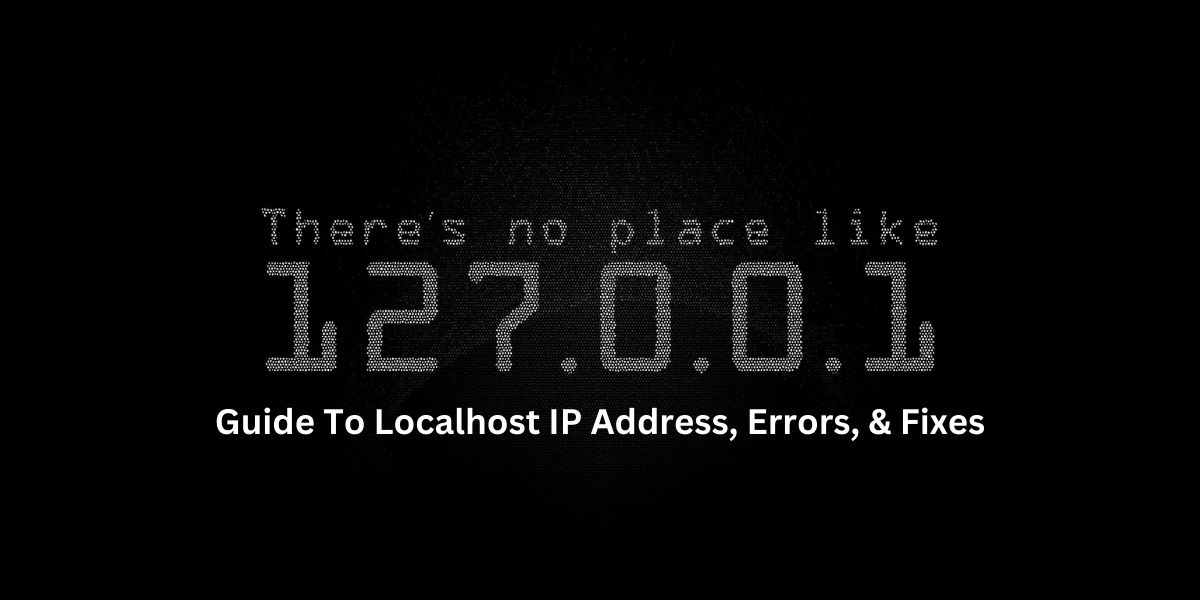Have you ever stumbled upon the seemingly random string “127.0.0.1:49342” while tinkering with your computer’s settings or exploring the depths of the internet? If so, you’re not alone. This cryptic address has piqued the curiosity of tech enthusiasts and casual users alike.
We’ll dive deep into what 127.0.0.1:49342 means, explore common culprits behind the error, and equip you with a toolkit of solutions that’ll have you back in development bliss in no time. So, grab your favorite beverage, find a comfy spot, and conquer this beast together!
Table of Contents
ToggleUnderstanding the Basics
What is 127.0.0.1?
Before we dive into the specifics of 49342, let’s break down the “127.0.0.1” part. This is a unique IP address known as the loopback address. It’s essentially a way for your computer to talk to itself. When you type “127.0.0.1” into your web browser, it’s like looking in a mirror—the data is sent back to your own machine.
What is a Port Number?
Imagine your computer is a bustling city. Different parts of the town handle other things. So, 127.0.0.1 is the city, and the port number is the specific building or office you’re trying to reach. These IP addresses tell your computer where to transmit information.
The Significance of 49342
The “:49342” part of the address is a port number. Think of ports as specific doorways on your computer, each leading to a different service or application. In the case of 127.0.0.1:49342, port number 49342 is likely associated with a particular service or application running on your local machine.
What is 127.0.0.1:49342?
The IP address 127.0.0.1:49342 is known as the loopback address or “localhost.” 127.0.0.1:49342 means that a service is running on your own computer, specifically on port 49342. It is only used for internal communication on your computer and cannot be accessed from outside networks.
Potential Uses of 127.0.0.1:49342
While the exact purpose of 127.0.0.1:49342 remains shrouded in mystery, here are some potential applications:
- Web Development: Developers often use this address to access their local web servers for testing and debugging purposes.
- Network Configuration: Network administrators may use it to configure specific network settings or troubleshoot issues.
- Internal Communication: This port could be used for internal communication between applications or services on your computer.
- Debugging and Testing: Developers often use specific ports to debug or test their applications. 127.0.0.1:49342 could be a port assigned for this purpose by a particular software.
- Experimental Features: Some software developers might use hidden ports like this to experiment with new features or functionalities that are not yet publicly available.
- Hidden Services: In the realm of darknet networks, hidden services often use unusual port numbers to avoid detection. While it’s unlikely that 127.0.0.1:49342 is used for this purpose on a typical consumer computer, it’s a possibility that cannot be entirely ruled out.
127.0.0.1:49342 Common Errors: Why is it Happening?
Now that we know what it is, let’s discuss why it’s happening. Here are some common errors:
Port Conflict: Another application might be hogging port 49342. It’s like using the same phone number for two different people.
Firewall Issues: Your firewall might be blocking access to port 49342. Think of it as a grumpy gatekeeper denying entry.
Application Bugs: The application itself might have a bug causing the error. This is like a typo in a recipe.
Network Configuration Problems: Issues with your network settings can also lead to this error. Imagine your GPS giving you the wrong directions.
Troubleshooting Tips: Fixing the 127.0.0.1:49342 error
Alright, enough with the bad news. Let’s get to the good stuff – fixing it! Here are some steps you can take:
Check for Port Conflicts: Task Manager (Windows) or Activity Monitor (Mac): Check if any other application uses port 49342. If so, you’ll need to close it or change the port in your application.
Command Line: To see which process uses the port, use the netstat -ano | findstr:49342 command (Windows) or lsof -i:49342 (Mac/Linux).
Adjust Firewall Settings
Temporarily Disable Firewall: This is a quick test to see if the firewall is the culprit. Be cautious, though!
Create Firewall Exception: If turning off the firewall isn’t an option, create a firewall rule to allow your application access to port 49342.
Check Application Configuration
Review Logs: Look for error messages in your application’s logs. They might provide clues about the issue.
Update Application: Sometimes, the error is fixed in a newer version.
Verify Network Settings
DNS Resolution: Ensure your DNS settings are correct. Try temporarily using Google’s public DNS (8.8.8.8 and 8.8.4.4).
IP Configuration: Check your IP address configuration (IPv4 or IPv6). Make sure it’s set to obtain an IP address automatically.
Additional Tips and Tricks
Restart Your Computer: Sometimes, a simple restart can work wonders.
Check for Malware: Malware can interfere with network connections. Run a scan to be safe.
Use a Different Port: If you’re still having trouble, try changing the port number in your application.
Final Thoughts
Unravel the mysteries of 127.0.0.1:49342 with our guide. Learn its role in local operations and security measures. Understanding 127.0.0.1:49342 is essential for anyone who wants to learn more about computers and networking. While initially seeming complex, it’s a straightforward concept once you know it. Remember, it’s your computer talking to itself, which can be a powerful tool for development, troubleshooting, and more.
FAQs
127.0.0.1:49342 and 127.0.0.1:62893 use 127.0.0.1, meaning they communicate with the local machine. 49342 and 62893 are different port numbers. A port number identifies a specific process or service on the local machine.
No, 127.0.0.1 is a loopback address, meaning it’s only accessible from the local computer itself.
Yes, most applications allow you to specify a different port number.
While generally safe, good security practices are essential to prevent potential exploits.
No, 127.0.0.1 is for internal communication only. A public IP address is required for an internet connection.
The specific applications using this port can vary widely. It’s often used for local development servers, but other software could also use it for internal communication.

